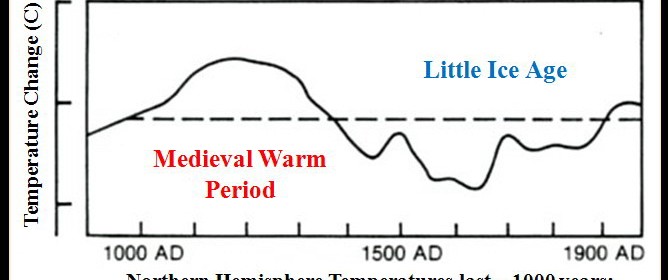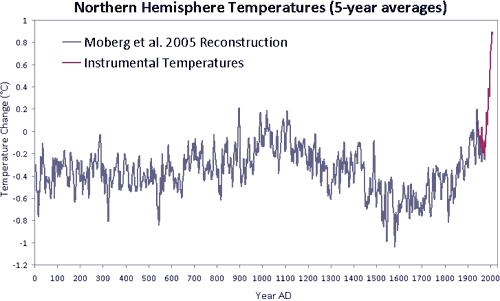Medieval Period Was Warmer Than Expected

One of the most common arguments of those skeptical of global warming is that the Medieval Warm Period (800-1400 AD) was as warm as or warmer than today. Using this as proof to say that we cannot be the cause of current global warming is a faulty notion based upon rhetoric rather than science. So what are the holes in this line of thinking?
Firstly, evidence shows that the Medieval Warm Period may have been warmer than today in many parts of the globe such as in the North Atlantic. This warming thereby allowed Vikings to travel further north than had been previously possible because of reductions in sea ice and land ice in the Arctic. However, evidence also shows that some places were very much cooler than today including the tropical pacific. All in all, when the warm places are averaged out with the cool places, it becomes clear that the overall warmth was likely similar to early to mid 20th century warming.

Since that early century warming, temperatures have risen well-beyond those achieved during the Medieval Warm Period across most of the globe. The National Academy of Sciences Report on Climate Reconstructions in 2006 found it plausible that current temperatures are hotter than during the Medieval Warm Period. Further evidence obtained since 2006 suggests that even in the Northern Hemisphere where the Medieval Warm Period was the most visible, temperatures are now beyond those experienced during Medieval times (Figure 1). This was also confirmed by a major paper from 78 scientists representing 60 scientific institutions around the world in 2013.
Secondly, the Medieval Warm Period has known causes which explain both the scale of the warmth and the pattern. It has now become clear to scientists that the Medieval Warm Period occurred during a time which had higher than average solar radiation and less volcanic activity (both resulting in warming). New evidence is also suggesting that changes in ocean circulation patterns played a very important role in bringing warmer seawater into the North Atlantic. This explains much of the extraordinary warmth in that region. These causes of warming contrast significantly with today’s warming, which we know cannot be caused by the same mechanisms.
Overall, our conclusions are:
a) Globally, temperatures are warmer than they have been during the last 2,000 years, and
b) the causes of Medieval warming are not the same as those causing late 20th century warming.

 Print
Print